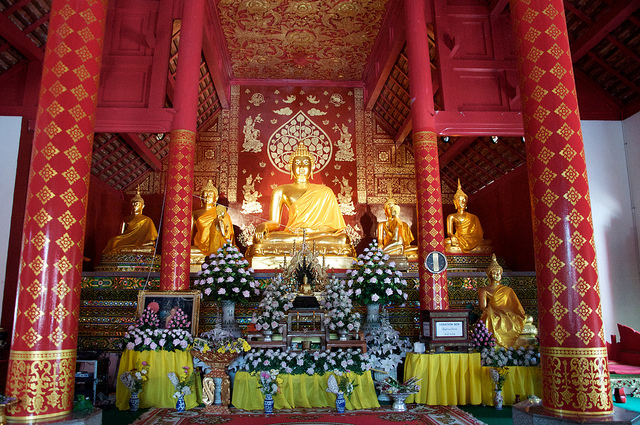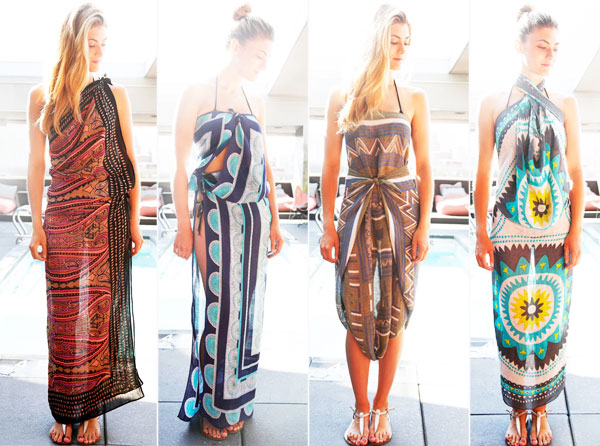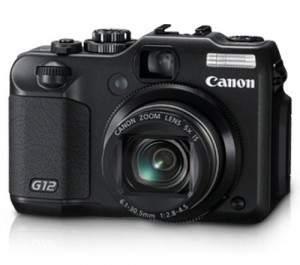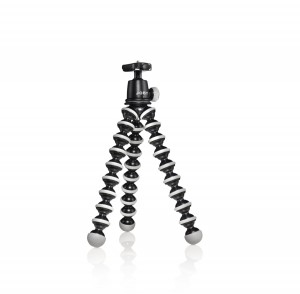When It comes to packing for a trip, multi-functional items are key to keeping your luggage small and compact for convenient travel. With this in mind, a sarong is an essential item to pack for any trip. It doesn’t matter where I’m going, warm climate or cold, I always pack at least one sarong and it is always well used.
What is a Sarong?
A sarong is a rectangular piece of fabric longer than it is wide, usually found in a variety of colourful prints. Its versatility is what makes it so essential for any trip as well as for day to day use.
Depending where you are in the world, sarongs have many different names. The name “sarong” comes from Indonesia. In Hawaii, they’re called pareos; in Fiji and Tahiti they’re known as lava-lava or sulu; in parts of Africa they’re called kente or kikoy; in Brazil they’re known as canga, and they have many other names, depending where in the world you are.
Multi-Functional Uses For a Sarong
I’ve used sarongs for many different purposes while traveling, some that I would have never thought of when I first started using them in the 1990’s.
- Wear It
The most common use is to wear it as clothing. There are countless different ways to wear a sarong, from a skirt or dress to a shirt or shorts or even a belt. - Beach or Bath Towel
Avoid bringing a heavy towel to the beach and bring a sarong instead. If you need to pack a towel when you travel, a sarong is a much lighter option and is far easier to pack, lighter to carry, doesn’t get heavy when it’s wet and it dries quickly. It’s also a great way to protect yourself from the sun. - Blanket
Lay it out on the ground for a picnic or wrap it around your shoulders if you get a little chilly. I also use it as a blanket when traveling on air-conditioned planes and busses. - Scarf / Shawl
For cooler nights or windy/rainy days, use a sarong as a scarf or shawl to keep you warm or to cover your hair if it rains. It is also an easy way to dress up any outfit when you have a limited travel wardrobe. - Cover up
When visiting temples or places of worship (in Southeast Asia for example), it is required to cover your legs before entering (for both men and women). I always carry a sarong with me, just in case. I’ve ended up spontaneously visiting a temple more than once, and although most temples will have sarongs available for sale or to borrow for a donation, I prefer to use my own.

- Bed sheets
Although most hostels are generally clean, I have used a sarong in sleeping situations where the cleanliness may have been a bit sketchy. If you have two with you, put one on the bottom and one on top, if you only have one, wrap it around yourself before getting into bed. - Pillow
If your hotel/hostel pillow isn’t puffy enough, or you simply don’t have one, use your sarong. You can wrap some clothes in it to make it extra puffy. I like to use one as a pillow on planes, busses and trains. - Purse – If you find yourself shopping and you don’t have a bag to carry all your purchases home in, tie the corners together into a purse.
- Curtain or Divider
If you’re staying in hostels with shared rooms, use your sarong to create privacy. I’ve also used it to block the windows on buses, trains or cars while in transit. - Packing Separator
Use it to separate your clean clothes from your dirty clothes in your backpack or luggage by wrapping your clothes inside it. - Padding
Wrap your valuables in it while in transit. I’ve used it for my laptop and my camera equipment both to conceal and protect it while moving from one location to the next. It’s also a great way to hide valuables while in public places or hostels.
- Emergencies
No one wants to end up in emergency situations while traveling, but if it happens a sarong can be used as a bandage, sling, tourniquet, or to tie a splint until you can get proper medical attention. - Gifts
When it’s time to go home, sarongs make great (and inexpensive) gifts to bring back for your friends and family. It is a practical souvenir that will always have a use.
I’ve collected many sarongs over the years and I’m still coming up with new creative uses all the time. I don’t only use them when I travel, but around the house as well. They are not only are they useful for us ladies, but they are equally practical for the men out there too. Don’t be shy boys, wear a sarong!
How do you use your sarong? Please share in the comments below.
If you found this article useful, share it with your friends by clicking the social sharing buttons below.
[Tweet “13 Ways To Use A #Sarong – An Essential #Travel Item”]



